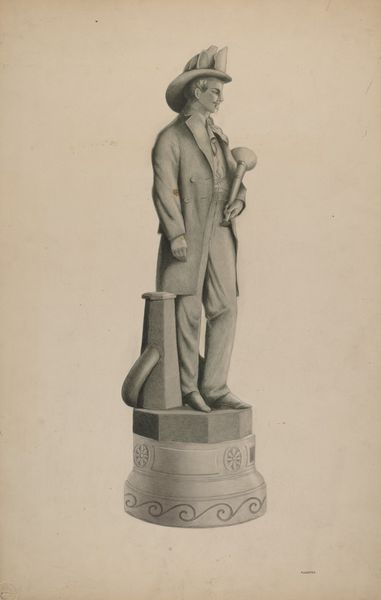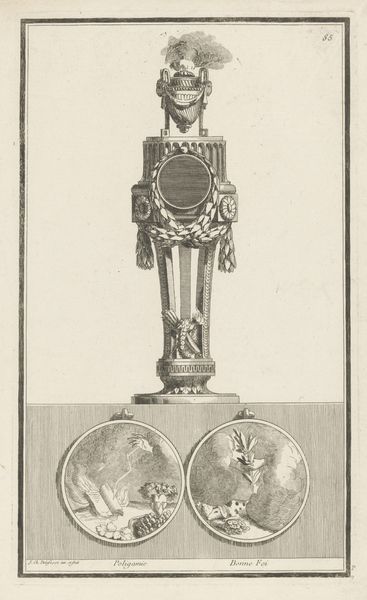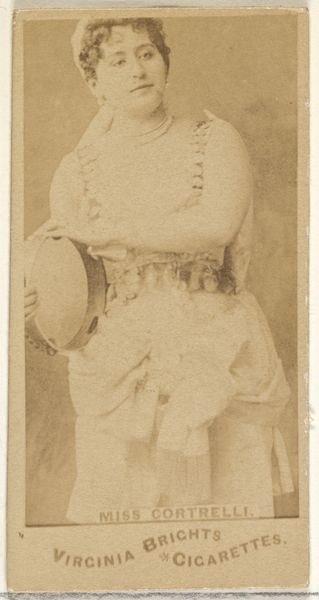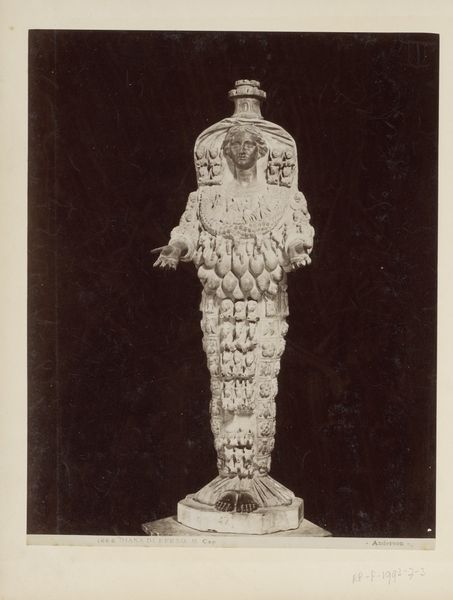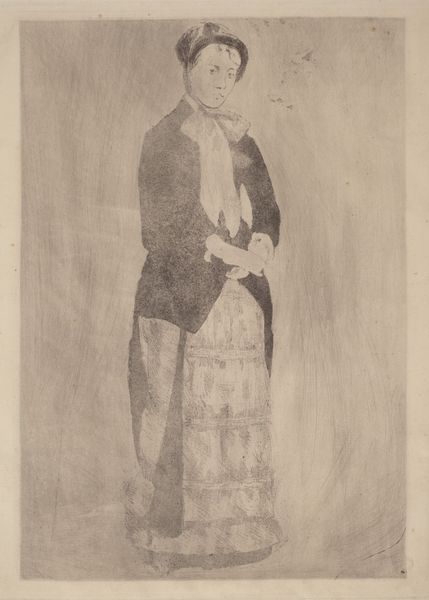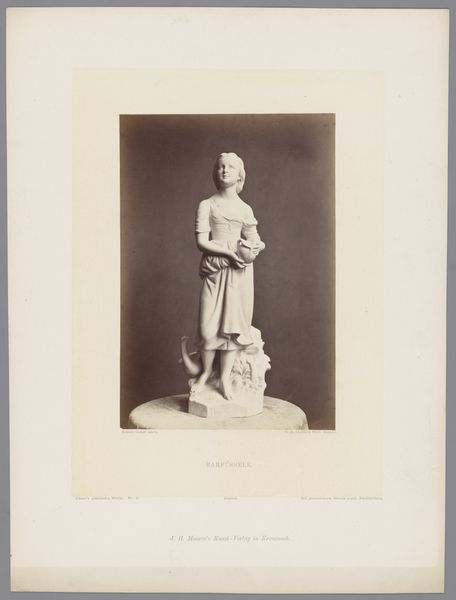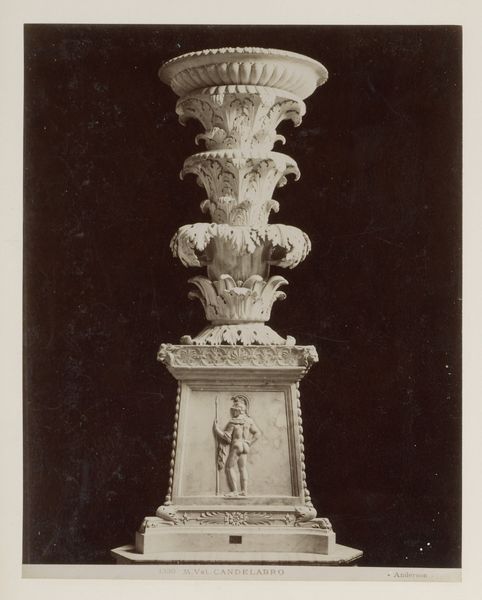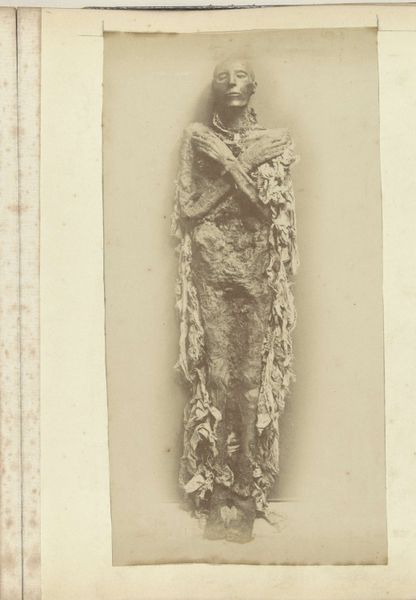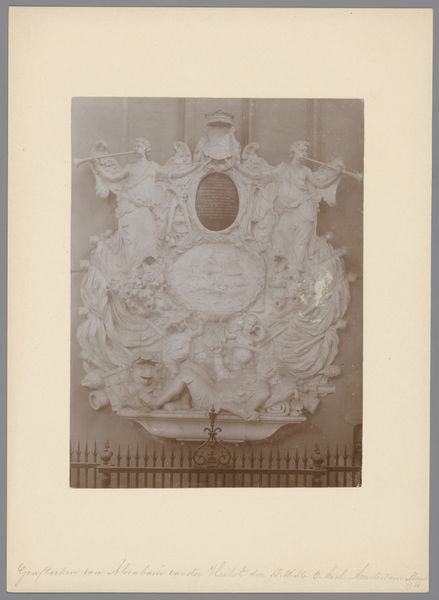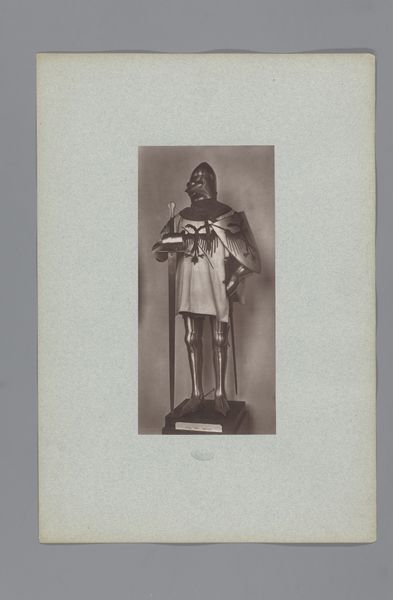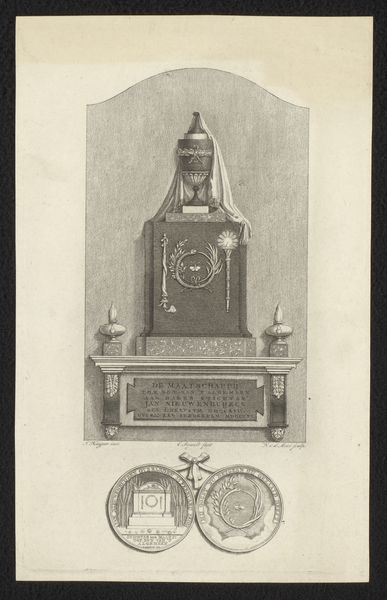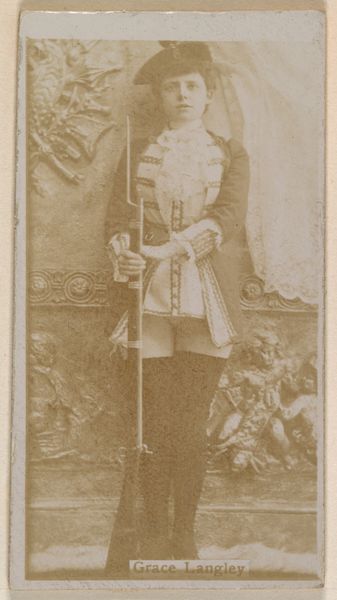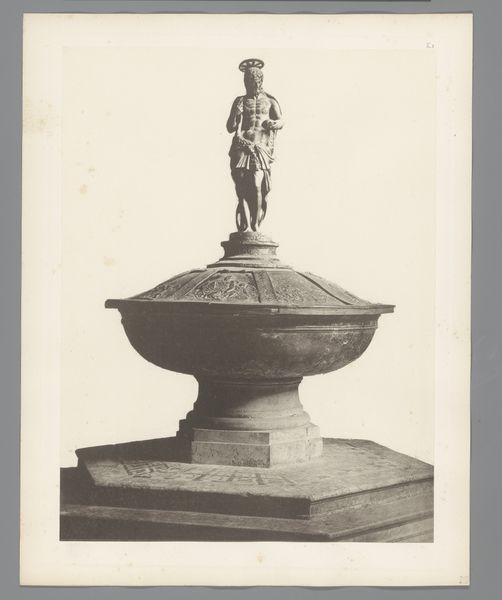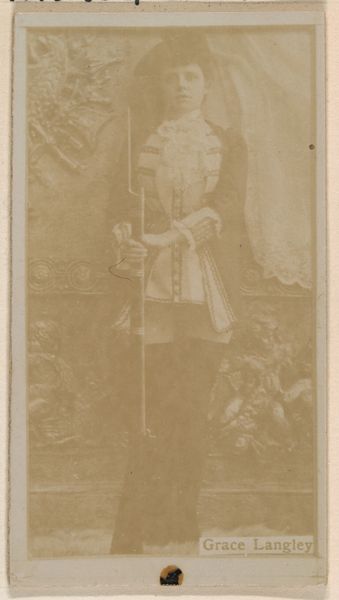
Dimensions: height 283 mm, width 158 mm
Copyright: Rijks Museum: Open Domain
Editor: Here we have "Borstbeeld van Pierre André de Suffren de Saint-Tropez," dating from 1890 to 1920. It appears to be a photograph of a sculpture, probably made of bronze and marble. I'm struck by how the stark whiteness of the bust contrasts with the dark background; what stylistic elements stand out to you? Curator: The formal relationships between the marble bust and its presentation are quite deliberate. The neoclassical bust of Suffren is staged photographically. The base and backdrop operate as integral framing devices, emphasizing a visual language steeped in order and balance. Note the use of symmetry: How does this contribute to the work's overall effect? Editor: The symmetry definitely gives it a sense of gravitas, like a monument. But it also feels a little…stiff. Is there any sense of movement or dynamism here? Curator: Observe the drape of the sculpted fabric across Suffren's chest, juxtaposed to the rigid contour of the backdrop. Further, analyze the play of light across the marble—the stark contrast between illumination and shadow. How do these contrasting textural elements inform your reading? Editor: I see it now. The texture of the fabric softens the imposing feel of the piece and the dramatic light gives dimension. So, it's not just about pure, static form. Curator: Precisely. Consider how the medium of photography alters our perception. We're not seeing the "real" sculpture, but a carefully constructed image of it. That photographic filter affects its perceived formality, inviting us to examine layers of representation. Editor: That's fascinating! I hadn't considered the photographic aspect so closely. The layers of representation and staging add so much more depth to the interpretation. Curator: Indeed. A keen awareness of compositional and material dynamics encourages us to unlock complex interpretations. The more time you spend analyzing the aesthetic, the more details are visible.
Comments
No comments
Be the first to comment and join the conversation on the ultimate creative platform.
